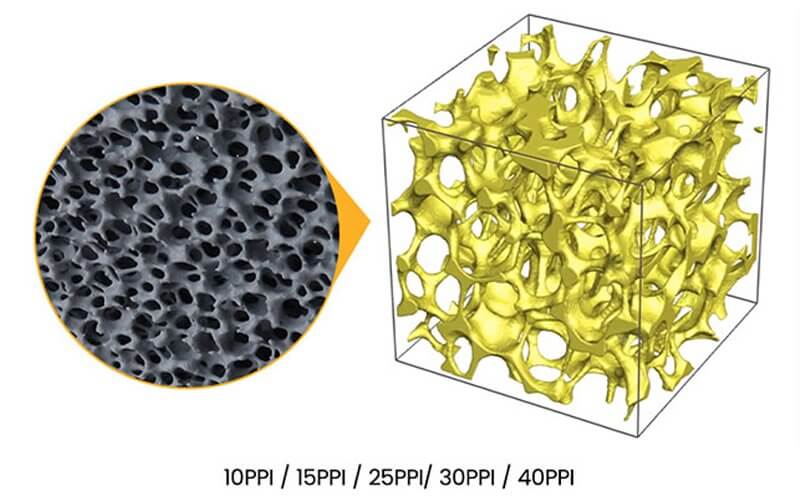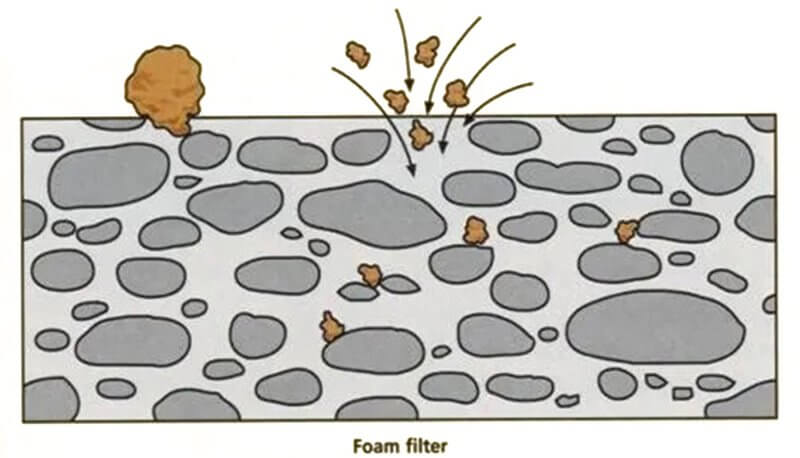In the realm of metal casting, the pursuit of high-quality, defect-free castings has driven the development of advanced filtration technologies. Among these breakthrough solutions, ceramic foam filters have emerged as an essential component in the casting process. With their exceptional ability to capture and remove impurities, these filters play a critical role in enhancing the quality and integrity of metal castings. In this article, we will delve into the inner workings of ceramic foam filters and explore how they effectively improve the casting process.
Part 1: Understanding Ceramic Foam Filters
1.1 Introduction to Ceramic Foam Filters:
Ceramic foam filters are engineered from a variety of ceramic materials, including alumina, silicon carbide, zirconia, and other refractory oxides. These filters possess a unique structure characterized by a network of interconnected pores, forming an open-cell structure with controlled porosity. This structure allows for efficient filtration of molten metal, capturing and retaining impurities while allowing clean metal to pass through.

1.2 Composition and Manufacturing Process:
Ceramic foam filters are typically made through a specialized manufacturing process. Initially, a ceramic slurry is prepared by mixing ceramic particles with a binder and other additives. The slurry is then poured into molds of the desired shape, and a foaming agent is introduced to create the interconnected pore structure. After drying and sintering, the ceramic filters are formed, ready for use in the casting process.
Part 2: How Ceramic Foam Filters Work
2.1 Filtration Mechanisms:
Ceramic foam filters employ multiple mechanisms to effectively filter impurities from molten metal. The primary filtration mechanisms include:
2.1.1 Physical Filtration:
The interconnected pore structure of the ceramic foam filter acts as a physical barrier, trapping and retaining impurities present in the molten metal. The size of the filter’s pores can be tailored to target specific particle sizes, enabling efficient removal of unwanted substances such as slag, non-metallic inclusions, and oxides.

2.1.2 Adsorption:
Ceramic materials used in the filters can possess adsorptive properties, allowing them to attract and retain certain impurities through electrostatic or chemical interactions. This adsorption mechanism enhances the overall filtration efficiency, particularly for impurities that are not easily captured by physical filtration alone.
2.2 Flow Control:
In addition to filtration, ceramic foam filters also play a crucial role in controlling the flow of molten metal. As the metal passes through the interconnected pores of the filter, it experiences controlled resistance and turbulence. This controlled flow helps to reduce the velocity and impact of the molten metal, minimizing the potential for mold erosion and improving the overall casting quality.
2.3 Heat Transfer and Thermal Stability:
Ceramic foam filters possess excellent thermal conductivity, allowing them to efficiently transfer heat between the molten metal and the surrounding environment. This heat transfer mechanism helps to regulate the temperature of the metal during the casting process, preventing thermal shocks and ensuring a controlled solidification process.
Part 3: Advantages and Applications of Ceramic Foam Filters
3.1 Advantages of Ceramic Foam Filters:
Ceramic foam filters offer numerous advantages over traditional filtration methods in metal casting. Some key advantages include:
- Enhanced filtration efficiency, capturing impurities down to submicron sizes.
- Improved surface finish and dimensional accuracy of castings.
- Reduction in casting defects, such as porosity and inclusions.
- Compatibility with various casting processes, including sand casting, investment casting, and continuous casting.
- High thermal stability, withstanding the high temperatures and thermal shocks associated with the casting process.
- Long filter life, resulting in cost savings and increased productivity.
3.2 Applications of Ceramic Foam Filters:
Ceramic foam filters find applications in a wide range of industries that utilize metal casting processes. Some common applications include:
- Automotive and aerospace industries for casting engine components, turbine blades, and other critical parts.
- Foundries producing castings for machinery, pumps, valves, and other industrial equipment.
- Jewelry and art industries for intricate and detailed castings.
- Manufacturing of pipes, fittings, and other metal products requiring high-quality castings.
Conclusion:
Ceramic foam filters have revolutionized the metal casting industry by providing highly effective filtration of impurities during the casting process. By leveraging their unique structure and filtration mechanisms, these filters enhance casting quality, reduce defects, and improve overall productivity. With their diverse applications and significant advantages, ceramic filters continue to play an integral role in achieving superior castings across various industries. As the metal casting industry evolves, foam filters are poised to remain at the forefront of innovation, driving advancements and ensuring the production of high-integrity metal castings.

